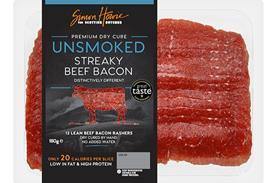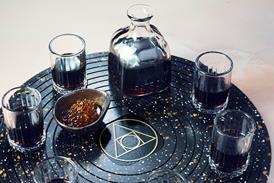Are food manufacturers helping consumers to meet dietary requirements with added healthy ingredients?
More and more standard products such as cereals and fruit juices are being fortified with added ingredients to make them healthier for consumers. However, Jeanette Longfield, co-ordinator at Sustain, is not convinced that the method of adding vitamins is necessarily a good thing.
She says: “Vitamins can interact with each other in complicated ways in the body. You can’t assume that vitamin X is going to be good for one person. Adding vitamins and minerals to junk food doesn’t mean it’s good for you.”
Kellogg is one such company that has traditionally gone down the fortification route. A Kellogg spokesman says: “Fortifying foods can play a valuable role in
helping people meet their dietary requirements in order to achieve a balanced diet.”
Virtually all Kellogg’s breakfast cereals and breakfast bars are fortified with at least 25% of the GDA of six B vitamins and 17% of the GDA of
iron per 30g serving. Many kids’ cereals are fortified with extra calcium, contributing 17% of the GDA.
Nestlé UK also recently got in on the act in April last year, making cereals with wholegrain. Dr Clare Chapman, Nestlé nutritionist, says: “More than 90% of the UK population are falling short of eating the recommended three servings of wholegrain per day [according to US guidelines], and more than 25% of people are failing to consume any wholegrain at all.”
Drinks is another category in which a raft of fortified products is being launched. Del Monte has introduced Healthy Plus Orange Juice with Added Vitamins, which is “designed to tap into the ever-growing consumer quest for more vitality and functional health food options,” says Sarah Swindell, product manager for beverages at the drinks manufacturer.
Tropicana says it continues to see growth in the market for fortified drinks that give consumers more than just the benefit of fruit. In January last year it relaunched its healthy drinks range, with new packaging and a much greater emphasis on health. The variants include juices that contain added multivitamins, calcium, fibre as well as a low acid product.
More and more standard products such as cereals and fruit juices are being fortified with added ingredients to make them healthier for consumers. However, Jeanette Longfield, co-ordinator at Sustain, is not convinced that the method of adding vitamins is necessarily a good thing.
She says: “Vitamins can interact with each other in complicated ways in the body. You can’t assume that vitamin X is going to be good for one person. Adding vitamins and minerals to junk food doesn’t mean it’s good for you.”
Kellogg is one such company that has traditionally gone down the fortification route. A Kellogg spokesman says: “Fortifying foods can play a valuable role in
helping people meet their dietary requirements in order to achieve a balanced diet.”
Virtually all Kellogg’s breakfast cereals and breakfast bars are fortified with at least 25% of the GDA of six B vitamins and 17% of the GDA of
iron per 30g serving. Many kids’ cereals are fortified with extra calcium, contributing 17% of the GDA.
Nestlé UK also recently got in on the act in April last year, making cereals with wholegrain. Dr Clare Chapman, Nestlé nutritionist, says: “More than 90% of the UK population are falling short of eating the recommended three servings of wholegrain per day [according to US guidelines], and more than 25% of people are failing to consume any wholegrain at all.”
Drinks is another category in which a raft of fortified products is being launched. Del Monte has introduced Healthy Plus Orange Juice with Added Vitamins, which is “designed to tap into the ever-growing consumer quest for more vitality and functional health food options,” says Sarah Swindell, product manager for beverages at the drinks manufacturer.
Tropicana says it continues to see growth in the market for fortified drinks that give consumers more than just the benefit of fruit. In January last year it relaunched its healthy drinks range, with new packaging and a much greater emphasis on health. The variants include juices that contain added multivitamins, calcium, fibre as well as a low acid product.


















No comments yet